The impact of COVID-19 fiscal spending on climate change adaptation and resilience
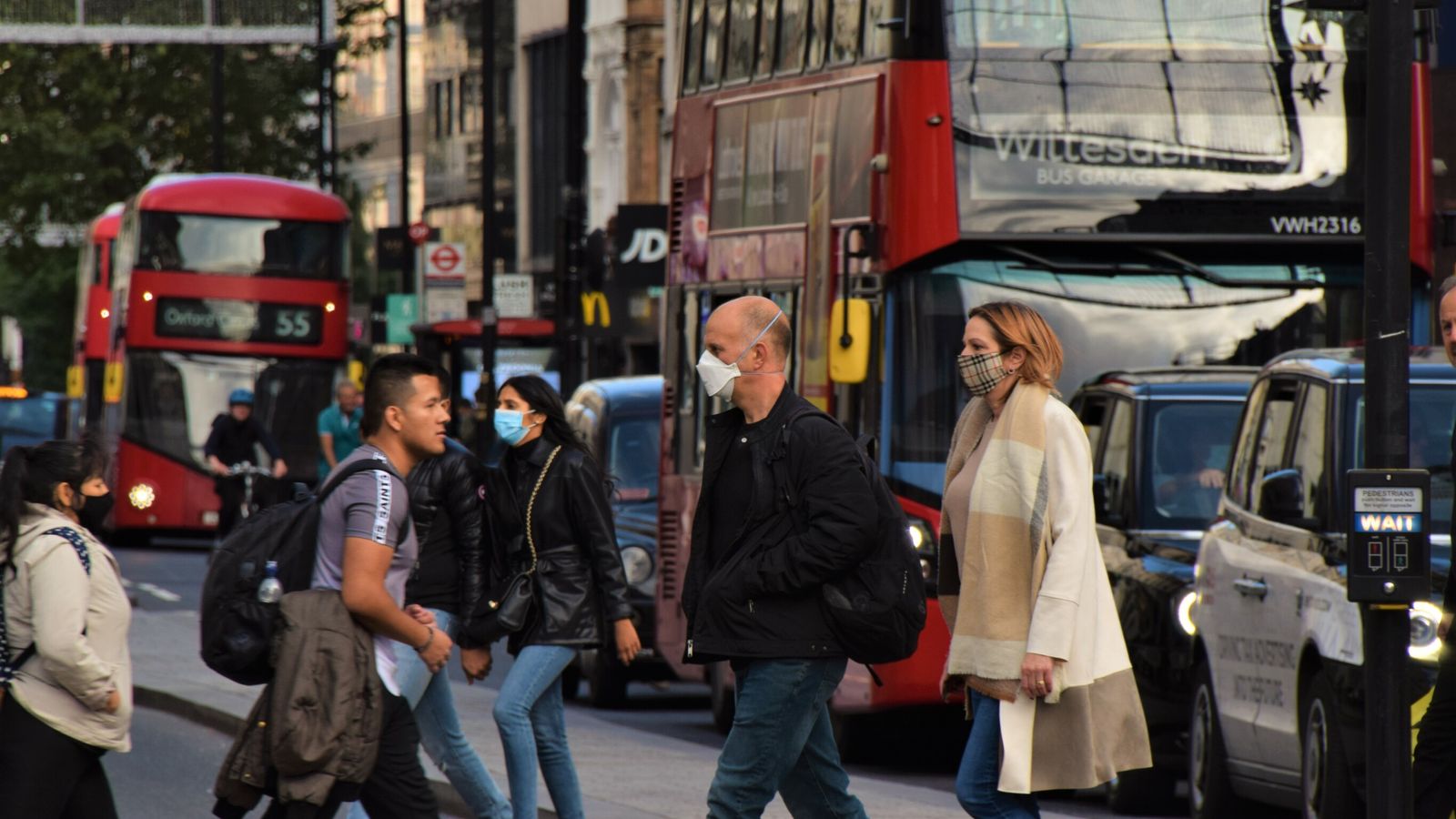
Introduction
Government expenditure and taxation have a significant influence on the long-term adaptation and resilience of societies to climate and other environmental shocks. During the initial ‘rescue’ phase of the COVID-19 pandemic, which focused on immediate protection of lives and livelihoods, 88 governments spent an estimated US$12 trillion on short-term relief measures. The ‘recovery’ phase saw an additional US$3 trillion allocated to policies aiming to reinvigorate economies in the mid to long term. Together, rescue, recovery and unclear spending totalled US$17.5 trillion.
This unprecedented fiscal spending offered an opportunity to systematically enhance adaptation and resilience to future shocks. But did the ‘build back better’ rhetoric manifest in more resilient policy?
This study analyses 8,000 government policies across 88 countries using a dedicated fiscal policy taxonomy for climate change adaptation and resilience —the Climate Resilience and Adaptation Financing Taxonomy (CRAFT). Its findings reveal how Covid-19 recovery spending contributed to climate adaptation and resilience (A&R) and highlight the relative prioritisation of A&R versus mitigation.
Methodology
The authors develop the Climate Resilience and Adaptation Financing Taxonomy (CRAFT) that scores policy types according to their expected impacts on both ‘direct’ and ‘indirect’ climate change A&R. Direct A&R refers to explicit efforts to adapt to current or expected climate effects. Indirect A&R refers to efforts that increase resilience or reduce vulnerability to climate change effects, regardless of whether the intention was to directly address climate risks.
This taxonomy builds on the methodology of the Global Recovery Observatory (GRO), which classified fiscal policy types into a set of 40 exhaustive and mutually exclusive policy ‘archetypes’ and 158 ‘subarchetypes.’ CRAFT refines this original methodology to differentiate between policy types that are relevant to climate A&R, resulting in 42 archetypes and 293 subarchetypes. This extended archetype set was developed by taking the GRO taxonomy and analysing the ~8,000 COVID-19 policies recorded in the GRO database to identify gaps where policies might have A&R characteristics but were categorized to archetypes that would traditionally not be considered A&R-related.
To read the full methodology, please read the article which can be downloaded from the right-hand column.
Key findings
The A&R characteristics of COVID-19 spending
- Across both the rescue and recovery phases of the pandemic, governments directed 1.7–2% (US $289–344 billion) of spending to policies with an expected positive direct climate A&R impact. When indirect A&R is considered, a total of 4.5–6.8% (US$758– 1,181 billion) of spending has potentially positive A&R impacts. The rescue phase of the pandemic focused primarily on immediate protection of lives and livelihoods and thus had limited A&R impacts, with 0.1–2.8% (US$10–336 billion) of spending having estimated positive direct or indirect A&R impacts. Only US$279–334 billion (9.7–11.1%) of recovery spending was allocated to direct (explicit) efforts to adapt to current or expected climate change effects. Broken down by policy type, the highest proportion of spending on direct A&R was allocated to disaster preparedness initiatives, natural infrastructure and green retrofitting programmes. When broader resilience impacts are accounted for (indirect A&R), the authors find that US$748–845 billion (25.9–28.1%) of recovery spending has the potential to positively support indirect adaptation and resilience.
- An estimated 27.6–28% (US$808–831 billion) of recovery spending has the potential to negatively impact climate A&R by ‘locking-in’ non-resilient infrastructure or promoting maladaptation, particularly through spending on transport, energy and urban development infrastructure without explicit regard for adaptation and resilience.
- The total of US$289–344 billion allocated to direct (explicit) A&R across both rescue and recovery phases falls below the levels of spending needed to ensure adequate adaptation and resilience to climate change. The United Nations Environment Programme estimates that adaptation costs for developing economies will range from US$160–340 billion per annum by 2030, while other estimates range from US$200–250 per year for developing countries, excluding China. These adaptation cost estimates are annual, whereas the fiscal spending policies in the analysis typically come with 5–10-yr implementation horizons. Extrapolating these estimates to 5–10-yr horizons, the range of adaptation costs for developing economies amounts to US$800–1,700 billion over 5 years or US$1,600–3,400 billion over 10 years.
Variation in A&R spending by region and country
- COVID-19 recovery spending on A&R was highly variable across regions. North America directed the highest absolute volume and proportion of recovery spending to A&R-positive policies, focusing on broadband investment, disaster preparedness, resilient infrastructure and education. Asia Pacific emphasized disaster preparedness, natural infrastructure and broadband, while Latin America and the Caribbean focused on education, broadband and social care. A&R-positive spending in Africa was dominated by disaster preparedness and education.
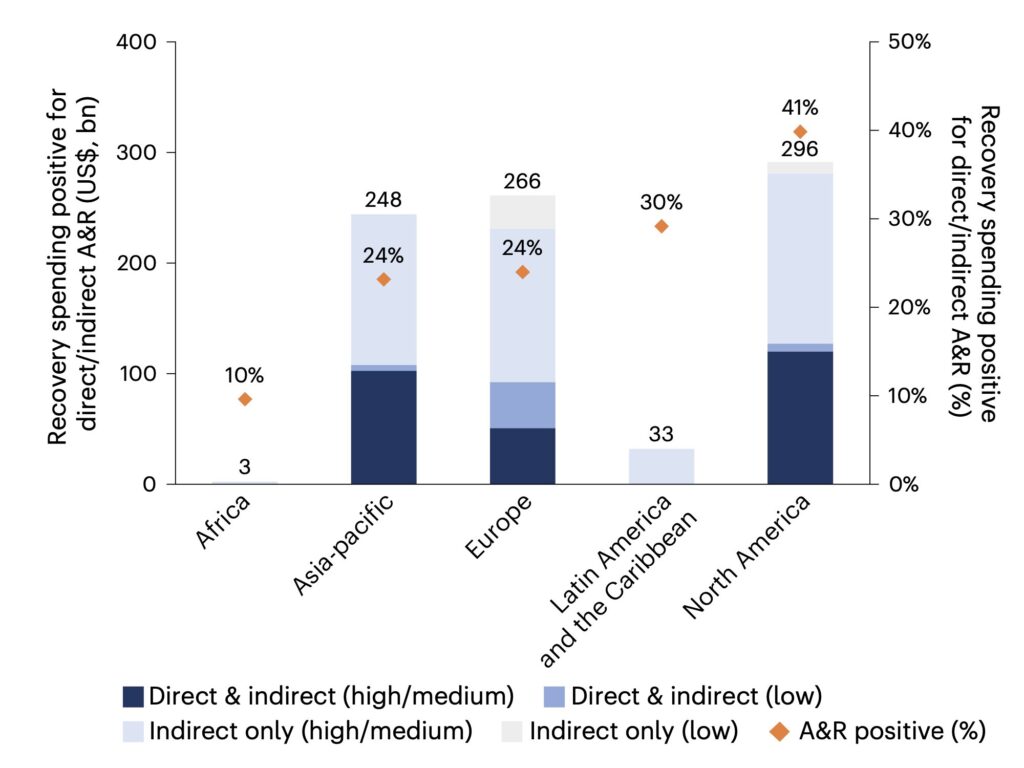
- There is a significant positive correlation between GDP and recovery spending on A&R-positive policies. This suggests that lower-income countries, some of which are the most vulnerable to climate change also spent less on A&R-positive policies in absolute terms.
- The positive correlation between a country’s readiness (economic, governance, social) and A&R spending and the positive correlation with adaptive capacity implies that countries that are more prepared for climate change tend to invest more in A&R measures, suggesting a policy pathway stickiness or inertia.
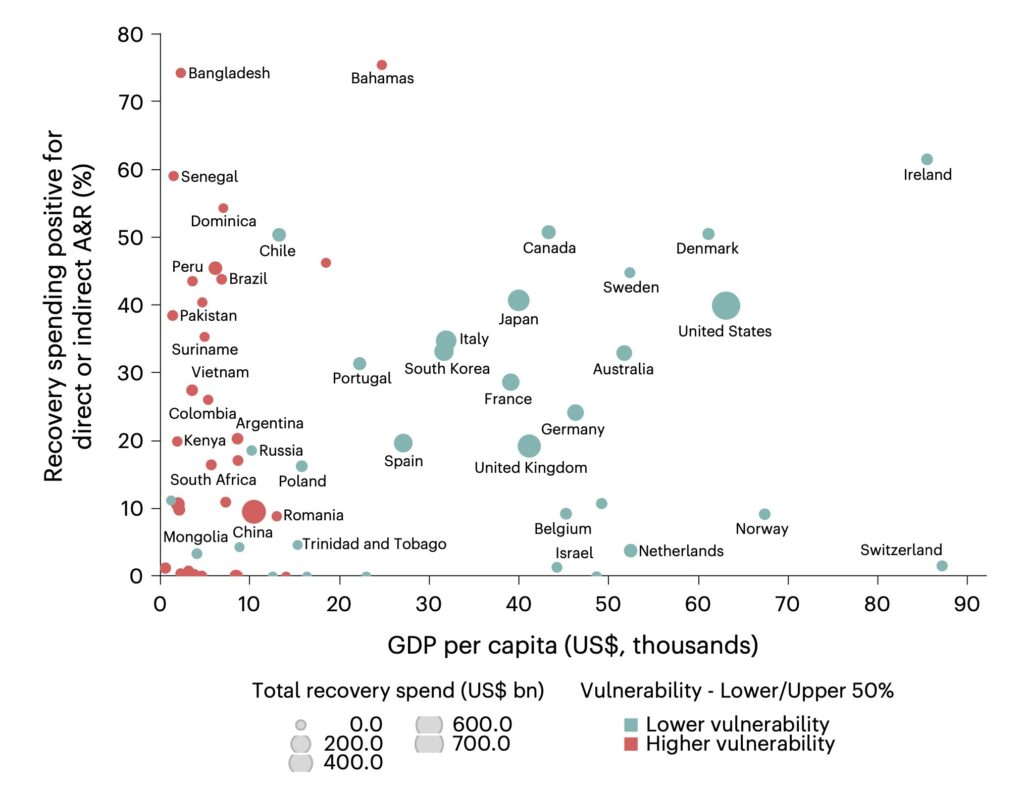
Relative prioritization of A&R versus mitigation
- Spending on climate change mitigation in the recovery phase was approximately three times higher than spending on direct A&R; that is, 28.5–30.2% of recovery spending had estimated positive impacts for mitigation, compared with 9.7–11.1% for direct A&R.
- Climate mitigation was referenced seven times more frequently than climate A&R in government policy documents, in 11 G20 countries. These results were developed through a complementary analysis on policy rhetoric.
- While the majority of COVID-19 fiscal policies are estimated to have neutral impacts for both climate change mitigation and A&R, some policy types offered potential trade-offs. 24 recovery subarchetypes, amounting to US$119–216 billion (4.1–8.5%) of recovery spending, scored positively for both mitigation and A&R. This spending was dominated by natural infrastructure investment (for example, environmental rehabilitation and conservation), resilient clean energy infrastructure and payments for ecosystem services. Policies such as natural infrastructure investment, green worker retraining, clean energy infrastructure and education have previously been identified as having moderate to high long-run economic multiplier effects, making these ‘triple benefit’ investments that help to achieve goals of economic recovery, climate change mitigation, and adaptation and resilience.
Discussion and implications
COVID-19 underscored the importance of A&R and provided an opportunity to ‘build back better’ for future shocks, including climate-related ones. However, despite considerable spending, this analysis suggests that the opportunity to enhance climate A&R was not fully utilized.
The study suggests insufficient emphasis among national policymakers on the benefits of integrating A&R considerations across various spending areas. Given the rhetorical emphasis on ‘building back better’ over the COVID-19 period, this result is particularly concerning and suggests that emphasizing the benefits of A&R to policymakers should be an urgent priority. The results underscore the importance of recognizing the potential negative impacts that government spending can have on adaptation and resilience if these factors are not urgently and holistically accounted for in policy planning.
While there are some trade-offs, the study found that several policy types have ‘triple benefits’ for climate A&R, mitigation and economic recovery. These synergies are particularly important for countries with high vulnerability and low fiscal space. It is crucial to prioritize A&R investment in low-income countries, which are often more vulnerable and in greater need.
Future spending should be paired with robust evaluation processes to better understand how different kinds of spending impact climate A&R over all time frames, as well as interdependencies between climate resilience and other forms of resilience.
Suggested citation
Sadler, A. Ranger, N., Fankhauser, S., Marotta, F., O’Callaghan, B. (2023) The impact of COVID-19 fiscal spending on climate change adaptation and resilience. Nature Sustainability, 7: 270-281.
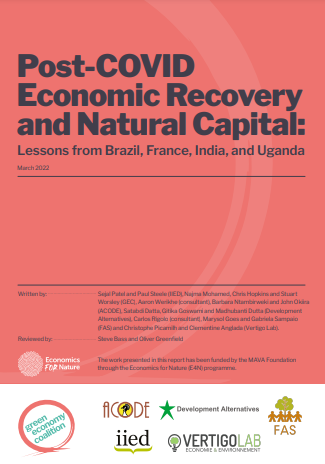
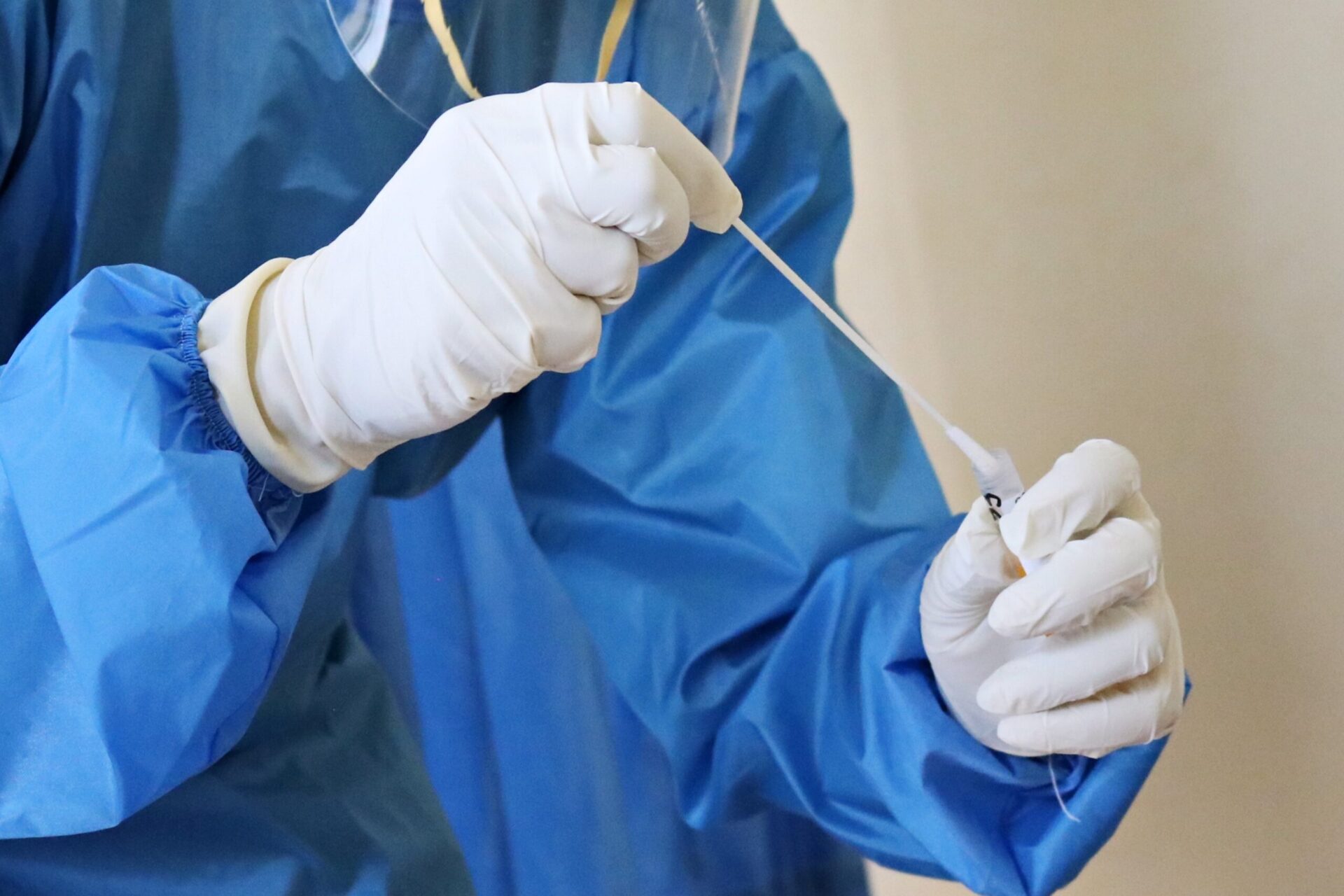
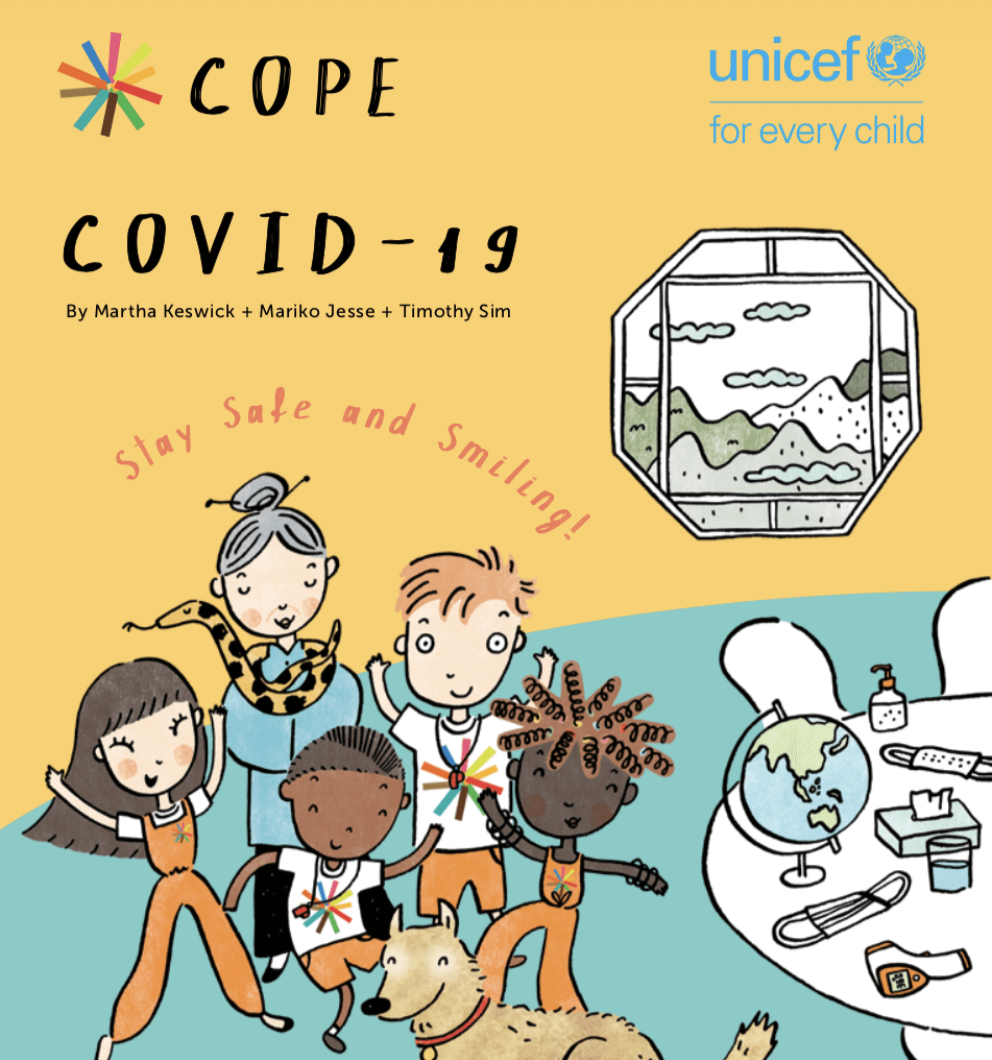
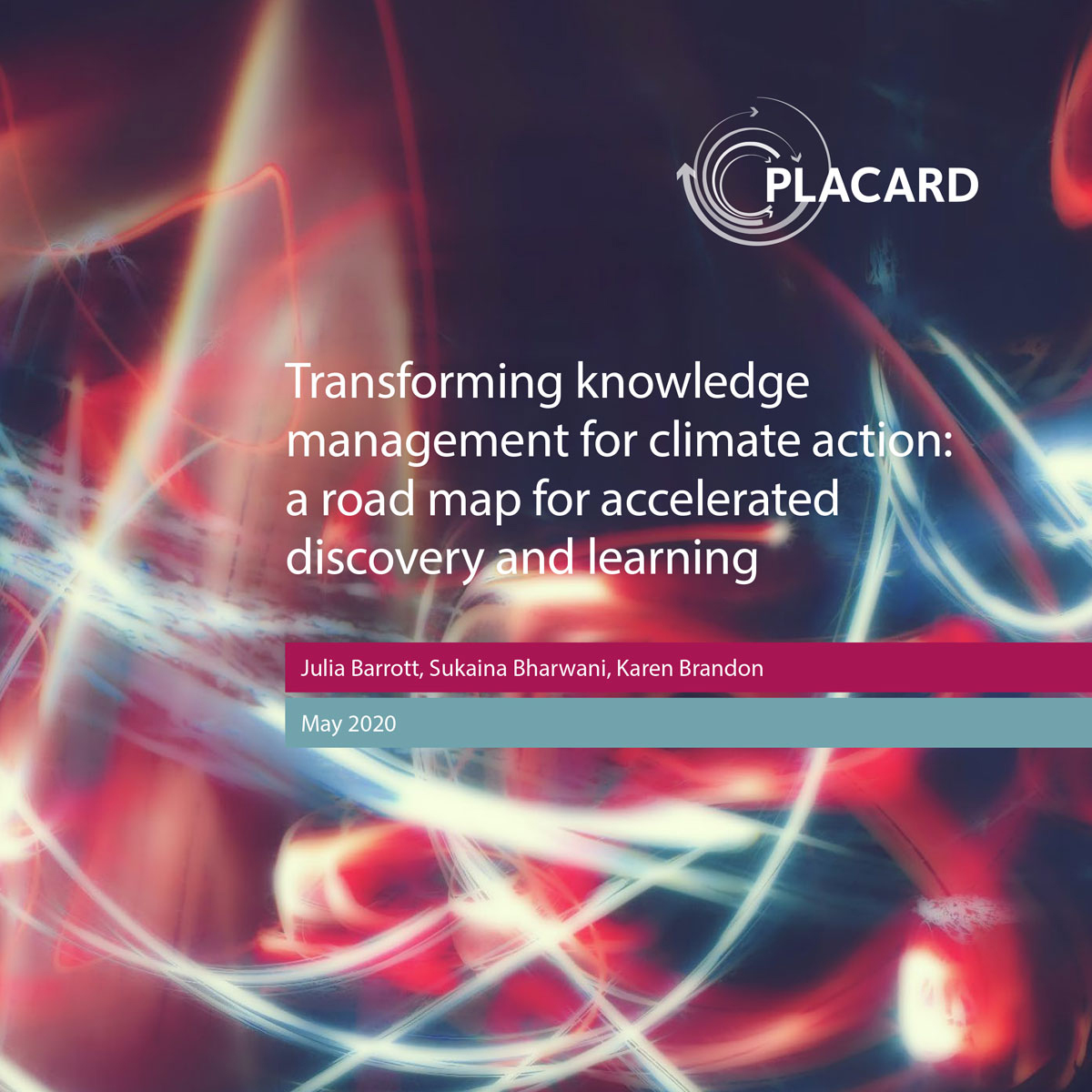
(0) Comments
There is no content